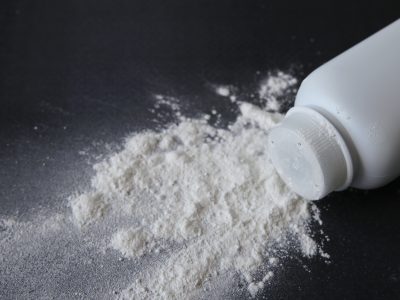On January 30th, a U.S. court dismissed Johnson & Johnson’s (J&J) bankruptcy attempt to avoid asbestos talc liability for thousands of cancer claims. The U.S. Court of Appeals for the 3rd Circuit ruled that J&J improperly placed a subsidiary, LTL Management, into bankruptcy as it was not under financial distress.
The ruling, several years in the making, now revives lawsuits brought against J&J by thousands of cancer victims and their families for exposure to asbestos contaminated baby powder.
At the heart of those lawsuits are allegations that the talc base of J&J’s baby powder was contaminated with asbestos. Those lawsuits allege J&J knew for decades that its talc contained asbestos and actively attempted to conceal that information from the public.
Thousands of lawsuits brought by cancer victims in recent years led J&J to move forward in 2021 with a strategy to capture all asbestos liability in a subsidiary which would then be placed into bankruptcy. In October 2021, J&J underwent a corporate restructuring under a Texas law known as the “Texas Two-Step.” This allows a division of a Texas entity into two or more new entities and terminates the liability of the original company. The new entity, LTL Management, then filed for bankruptcy protection two days later. This novel legal maneuver short circuits much of what would occur in a bankruptcy proceeding and poses a threat to our legal system.
Future corporations could take advantage of similar corporate restructuring to avoid mass tort liabilities. Some corporations have already done so. Georgia Pacific, Saint-Gobain and Trane Technologies have all attempted Texas Two-Step maneuvers with bankruptcy proceedings pending in U.S. appellate circuits outside of the court that ruled against J&J.
The 3rd Circuit’s J&J ruling turns on the fact that J&J adequately funded its subsidiary and thus the entity was not entitled to bankruptcy protection. The court noted that it leaves for another day the question of whether a corporation can excise its mass tort liabilities through a legal maneuver such as the Texas Two-Step.
Bankruptcy protection is meant to give debtors a fresh start – not to allow large, extremely profitable entities to engage in corporate restructuring to avoid liability.
In the future, it appears Congress or the U.S. Supreme Court may have to decide whether a debtor formed under a divisive merger is entitled to bankruptcy protection.


 Welcome Courtnie Webster
Welcome Courtnie Webster